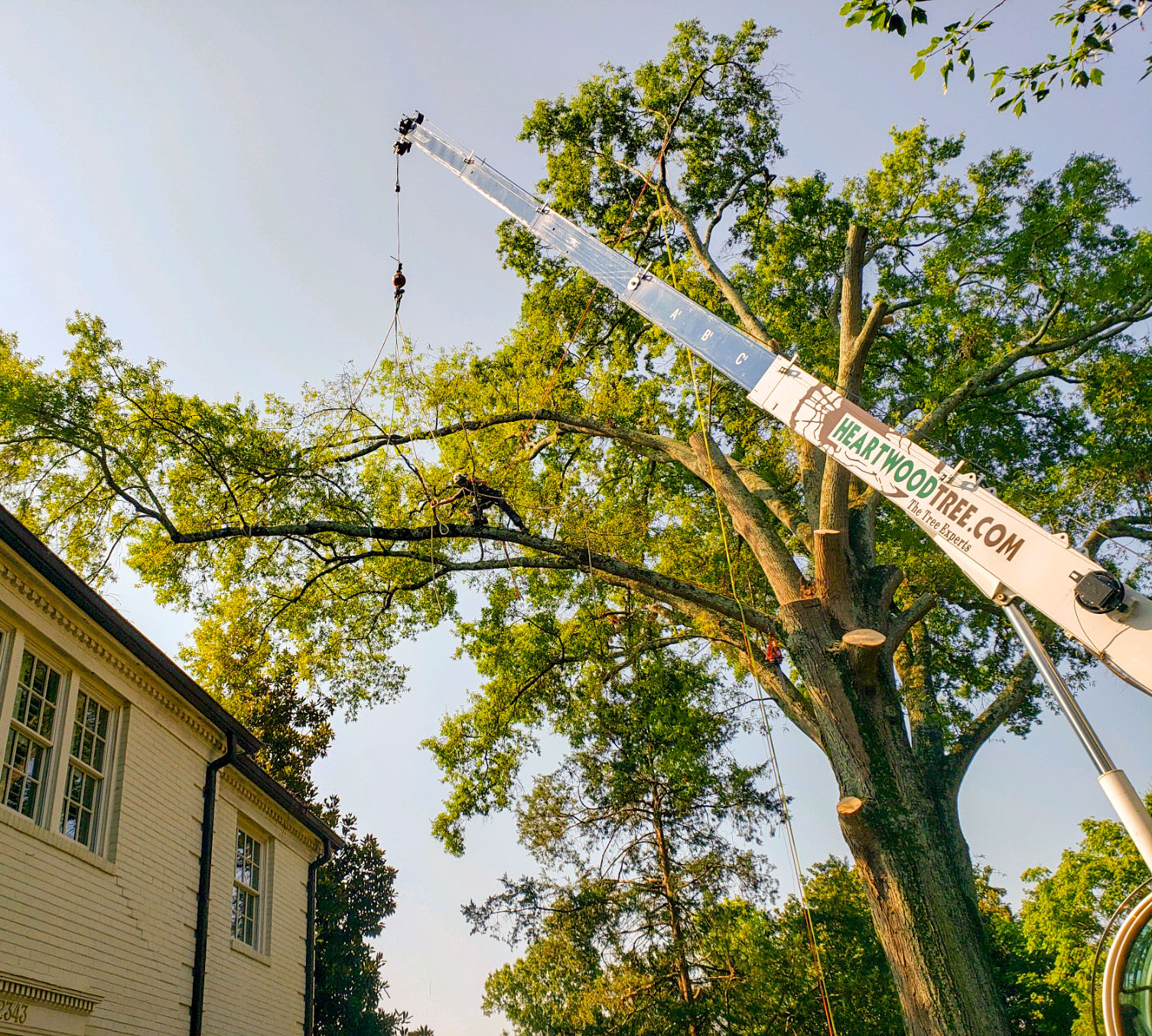
Tree Canopy Policy and Unified Development Ordinance
Editorial by Andrea Patarawan-Hickman
The newest addition to the ordinance and the one most applicable to homeowners is the concept of the Heritage Trees. A heritage tree is defined as any tree native to North Carolina per the USDA Department of Agriculture Natural Resource Conservation Service Plants Database whose DBH (diameter at breast height) is 30” or more. Oak, Beech, Pine, Cedar, Maple, Sweetgum and Tulip poplar are all native to N.C.
Article 20, Tree Preservation Requirements, mandates city approval for the removal of a healthy heritage tree. This requires residents to apply for a heritage tree removal permit and requires a replanting commitment in addition to paying a removal fee. The permit application cost $265 and the removal fee is $500. If you choose to remove a healthy heritage tree, you will now pay at least $765 to the city of Charlotte. This doesn’t include the cost of the actual removal.
Look Up, Look Out, Look Ahead. These new regulations are an effort to help mitigate the loss of Charlotte’s tree canopy so that future generations have a fighting chance to view Charlotte as it has historically been known as The City of Trees. Perhaps you’ve heard: the city has had a longstanding goal to increase the tree canopy to 50% by year 2050. Unfortunately, our canopy is shrinking as it has decreased from 49% to 46% in recent years.
Naturally, one would assume the canopy loss is due to the bustling development of the city; however, newer data suggests that we are losing too many trees in our residential areas. That’s right, it is the trees in our front and back yards that need the most protection. Therefore, it is our personal and collective responsibility to care for the trees that give back to us in so many ways (think of the benefits: monetary, aesthetic, health, ecological and environmental).
Don’t take unnecessary risks. Avoid costly mistakes.
If you have a healthy heritage tree within your landscape and are thinking of removal, reconsider. If you do decide it’s time for a removal based on risk tolerance or health concerns, ask about the city’s new regulations and processes when talking with a Sales Arborist. If a city resident and a tree company decides to ignore new UDO requirements; it can be costly as the fines are $200 per inch of DBH plus replanting cost. This can easily equate to several thousands of dollars for the removal of a mature native tree. The best protection from fines is to respect the intent of the new regulations and only remove heritage trees that are beyond repair or dead.
Let’s work together. Heartwood is here to help you navigate the new regulations. Not only is it a city goal we support, it is one that is built into our mission. Our desire is to be the Caretakers of the Crown (pun intended) and To Help Trees Outlive Humans after all.
Discussions should start during your consultation. If the native tree in question has health or risk concerns, your consulting arborist may suggest a Tree Risk Assessment. Depending on the conclusions of the report, we may find your heritage tree is exempt and a permit is not required or we may find that you do need to go through the city’s new tree removal permitting process.

We are here to help educate you and make sure you understand your options. You can go at it alone (we don’t recommend it) or you can lean on our team of experts to make the process less painful. For an additional charge, we’ll do most of the work for you. We can submit the permit application on your behalf acting as your agent and take care of all of the mitigation landscape plan submissions. We’ll work with you to determine what is best for your situation. At which, you would only be responsible for paying the mitigation fee to the City based on your mitigation choice.
What do I replant? Your replacement tree must be selected from the city approved tree list. Replanting location will help you determine the right tree for the right place. The best news is we’ll also replant the tree for you during the dormant season and provide you with aftercare instructions.
